Kia Sportage: Repair procedures | Canister
Inspection
[System Inspection]
1. Disconnect the vapor hose from the intake manifold and connect a vacuum pump to the nipple on the intake manifold.
- At Cold Engine [Engine Coolant Temperature < 60ºC(140ºF) ]

2. Check the following points with applied vacuum at the purge control solenoid valve (PCSV).
- At Warmed Engine [Engine Coolant Temperature > 80ºC(176ºF) ]
![[PCSV Inspection]](images/books/1921/16/index%20143.png)
[PCSV Inspection]
1. Turn ignition switch OFF and disconnect the negative (-) battery cable.
2. Disconnect the PCSV connector (A).
3. Disconnect the vapor hose (B) which is connected to the intake manifold from the PCSV.
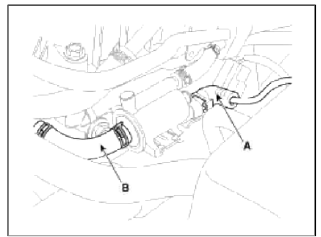
4. After connecting a vacuum pump to the nipple, apply vacuum.
5. With the PCSV control line grounded, check the valve operation with battery voltage applied to the PCSV (Open) and removed (Closed).

6. Measure the coil resistance of the PCSV.
Specifications: 19.0 ~ 22.0Ω [20ºC (68ºF) ]
[EVAP Leakage Test]
1. Select "Evap. Leakage Test".
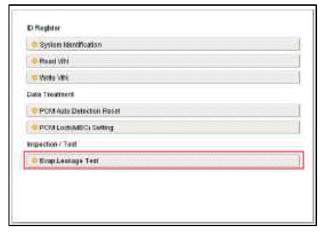
2. Proceed with the test according to the screen introductions.
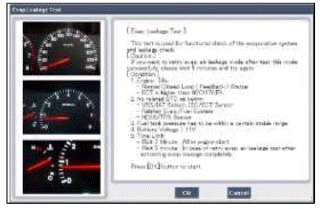
Canister
Repair procedures
Removal
1. Remove the fuel tank. (Refer to "Fuel tank" in FL group.)
2. Disconnect the vapor tube quick-connector (B) and the ventilation hose (A).
3. Remove the canister in the direction of an arrow after removing the installation screws (C).
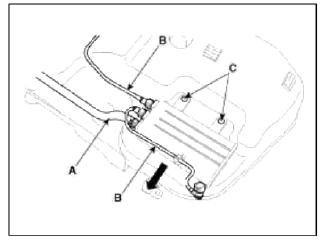
Inspection
1. Check for the following items visually.
- Cracks or leakage of the canister.
- Loose connection, distortion, or damage of the vapor hose/tube.
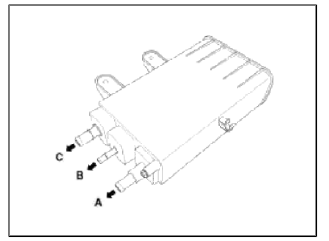
- Canister ↔ Atmosphere
- Canister ↔ Intake Manifold
- Canister ↔ Fuel Tank
Installation
Installation is the reverse of removal.
READ NEXT:
 Fuel Filler Cap | Fuel Tank Air Filter
Fuel Filler Cap | Fuel Tank Air Filter
Description and Operation
Description
A ratchet tightening device on the threaded fuel filler cap reduces the chances of incorrect installation, which seals the fuel filler. After the gasket
SEE MORE:
 Rear Stabilizer Bar | Rear Assist Arm
Rear Stabilizer Bar | Rear Assist Arm
Repair procedures
Replacement
1. Remove the rear wheel & tire.
Tightening torque: 88.3 ~ 107.9N.m (9.0 ~ 11.0kgf.m, 65.1 ~ 79.6lb-ft)
CAUTION
Be careful not to damage to the hub bolts when removing the front wheel & tire (A).
2. Loosen the nut and then remove the rear stabiliz
 Engine Control Module (ECM)
Engine Control Module (ECM)
Schematic Diagrams
ECM Terminal And Input/Output signal
ECM Terminal Function
Connector [CHTG-AG]
Connector [CHTG-BG]
ECM Terminal Input/Output signal
Connector [CHTG-AG]
Connector [CHTG-BG]
Circuit Diagram
Repair procedures
Removal
CA
Content
- Home
- Kia Sportage - Fifth generation (NQ5) - (2022-2025) - Owner's Manual
- Kia Sportage - Second generation (JEKM) (2005-2015) - Body Workshop Manual
- Kia Sportage Third generation (SL) - (2011-2016) - Service and Repair Manual
- Sitemap
- Top articles